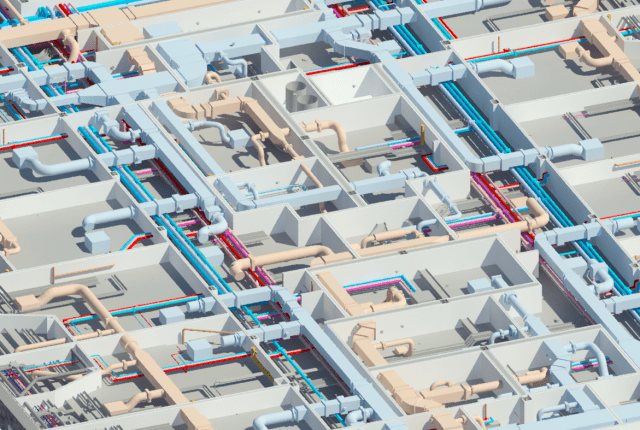Having advised clients on their potential options to achieve Net Zero, our team explores these options further using highly sophisticated modelling software.
This includes:
- Building Regulation Compliance (Part F, Ventilation)
- Building Regulation Compliance (Part L, Conservation of Fuel & Power)
- Building Regulation Compliance (Part O, Overheating)
- Climate Change Adaption & Mitigation
- Energy Statements
- TM52 / TM59 Thermal Comfort Assessment
- CBDM Assessment
- Psi-Value Calculations
- Airflow & Ventilation Modelling
- Passive Design Analysis
- TM54 Operational Energy Performance Assessments
- BB101 Adaptive Thermal Comfort of Schools Compliance Reporting
Utilising energy modelling allows our design team to make critical judgements and improvements at the early design stages of the building and allows optioneering studies to find the most efficient solution for the client. All these factors lead to better energy performance and lower carbon emissions of a building, aiding in the fight against climate change.

Renewable Energy Studies
Our team collaborates with clients and design team members to develop comprehensive and tailored solutions embracing the full spectrum of applicable renewable energy technologies and equipment within any building type. We give transparent and quantifiable advice on the renewable energy technology that is most suited for incorporation in the design and one that will deliver the largest carbon reduction for the building or development.
The seven recognised sources of renewable energy are:
- Solar
- Photovoltaic cells to generate electricity
- Solar thermal hot water generation
- Wind Energy
- Hydroelectric
- Biomass Energy
- Geothermal Energy
- Ocean – tidal and wave energy
- Hydrogen
When potential renewable energy technologies are considered for a development, we will assess the viability, capital cost, environmental impact, operating cost and predicted carbon emission reduction with viable options assessed on a whole life cycle basis.
Providing this level of information enables our client to make an informed decision when investing in renewable energy technologies, with a clear understanding of the likely costs and benefits.
Orientation Optimisation Reports
Our team of building physicists will model the building, including the proposed floor plans, fenestration and building shape, within the context of the site and its surroundings. Our specialist team will consider how the building orientation will affect:
• Internal comfort conditions
• Daylight provision and Glare risk
• Heating and cooling loads
• Renewable generation potential
We will advise you on how best to orientate the building, to reduce your energy usage and resultant carbon emissions whilst maintaining optimum comfort conditions






